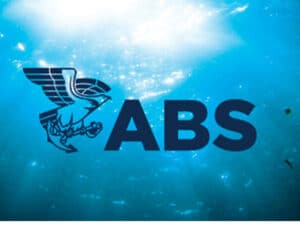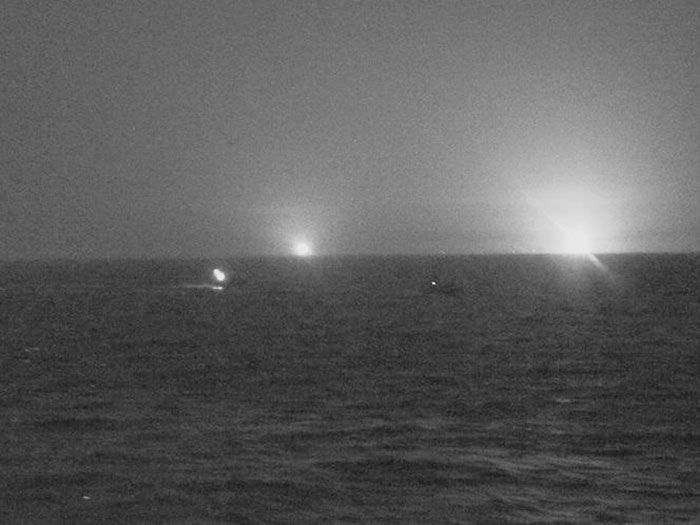
U.S. Navy vessel fires warning shots at IRGCN fast attack craft
Written by Marine Log Staff
Three Iranian Islamic Revolutionary Guard Corps Navy (IRGCN) fast inshore attack craft (FIAC) approach the U.S. Coast Guard patrol boat USCGC Baranof (WPB 1318) and patrol coastal ship USS Firebolt (PC 10), while the U.S. vessels were conducting routine maritime security patrols in the international waters of the North Arabian Gulf, April 26. Firebolt is assigned to U.S. Naval Forces Central Command’s Task Force (TF) 55 and Baranof is assigned to Patrol Forces Southwest Asia (PATFORSWA), the largest U.S. Coast Guard unit outside the United States, and operates under TF 55. [Photo by U.S. 5th Fleet Public Affairs]
Iran’s Islamic Revolutionary Guard Corps Navy (IRGCN) continues to engage in potentially dangerous close approaches to U.S. vessels. Within weeks of the April 2 incident in which IRGCN vessels harassed two U.S. Coast Guard patrol vessels, three of its fast inshore attack craft (FIAC) were in an encounter that led to a U.S. naval vessel having to fire warning shots.
Following is U.S. Fifth Fleet’s description of the incident:
“At approximately 8 p.m. on April 26, three Iranian Islamic Revolutionary Guard Corps Navy (IRGCN) fast inshore attack craft (FIAC) failed to exercise due regard for the safety of other vessels as required under international law as they came into close proximity to U.S. naval vessels in international waters of the north Arabian Gulf.
“The IRGCN armed speed boats rapidly approached U.S. Navy patrol coastal ship USS Firebolt (PC 10) and U.S. Coast Guard patrol boat USCGC Baranof (WPB 1318) to an unnecessarily close range with unknown intent, including a closest point of approach (CPA) of 68 yards to both U.S. ships.
“Firebolt and Baranof were conducting routine maritime security operations in international waters during the time of the incident.
“The U.S. crews issued multiple warnings via bridge-to-bridge radio and loud-hailer devices, but the IRGCN vessels continued their close range maneuvers. The crew of Firebolt then fired warning shots, and the IRGCN vessels moved away to a safe distance from the U.S. vessels.
“Throughout the interaction, U.S. forces proactively communicated with the IRGCN vessels and executed pre-planned responses to reduce the risk of miscalculation, avoid a collision, and to de-escalate the situation.
“The IRGCN’s actions increased the risk of miscalculation and/or collision, were not in accordance with the internationally recognized Convention on the International Regulations for Preventing Collisions at Sea (COLREGS) “rules of the road” or internationally recognized maritime customs. In addition, the IRGCN actions were not in accordance with the obligation under international law to act with due regard for the safety of other vessels in the area.
“U.S. naval forces continue to remain vigilant and are trained to act in a professional manner, while our commanding officers retain the inherent right to act in self-defense.
“The Firebolt and Baranof crews operated with distinct professionalism, superior seamanship and dispassionate yet firm resolve.
“As professional mariners, we expect the IRGCN to operate with due regard for the safety of all vessels as required by international law.
“The U.S. is not an aggressor; our naval forces remain postured in a non-provocative manner that exemplifies professionalism, incentivizes adherence to international law and customs, and persuades others to emulate our actions. Our forces are trained, however, to conduct effective defensive measures when necessary.”




